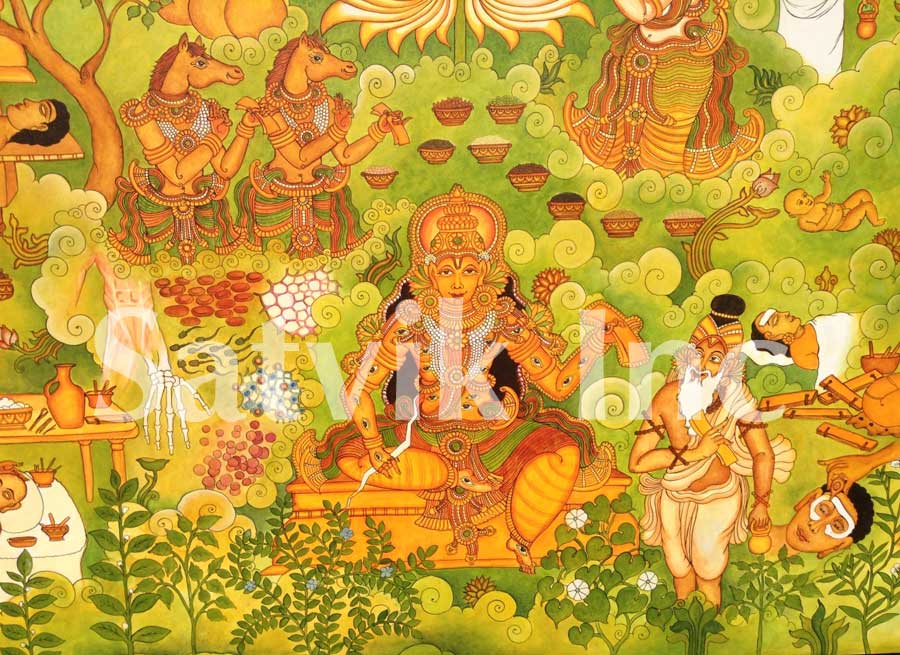
This museum was held at several cities as follows;
2016 Tokyo, Hamamatu, Kyoto
2017 Kyoto, Okinawa
2018 Matsudo
2021 Kumamoto
2022 Kamakura
*Next will be held on Saturday 26 to Monday 28 March, 2022 in Kitakamakura*
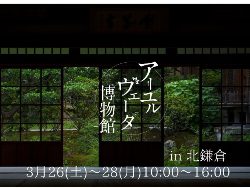
Message from the Director
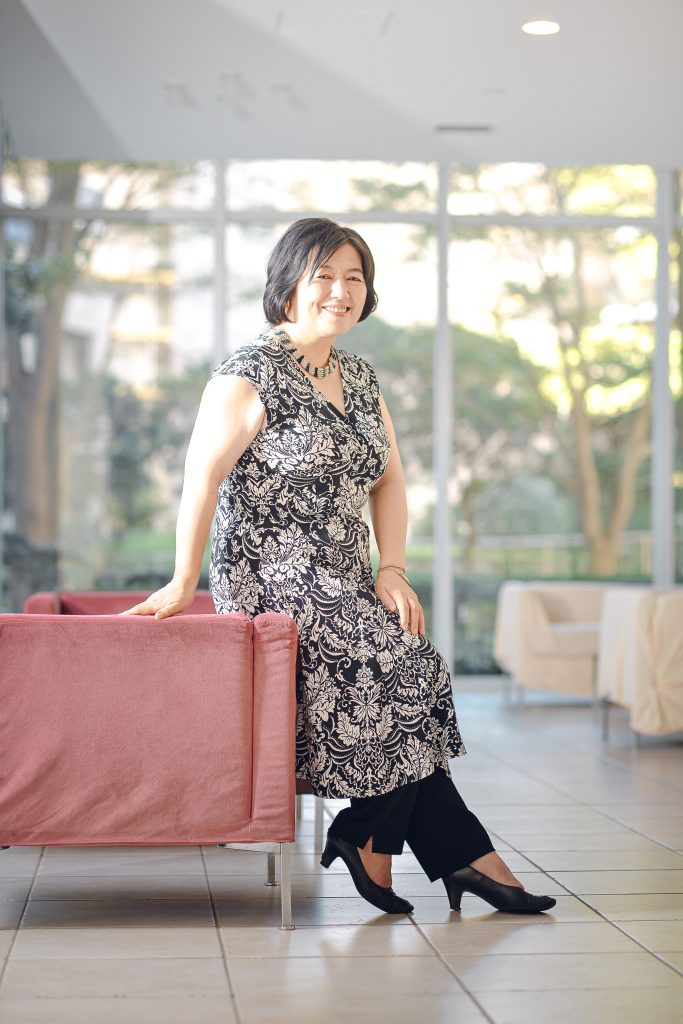
Ayurveda Museum Director
This is not a permanent exhibit. Followed by Vol. 1 (Series No. 1) held in Omotesando, Tokyo in May, those who want to have the exhibit in their own community throughout Japan carry on the traveling exhibit. Through this exhibit, we hope that Ayurveda will spread all over Japan beyond Tokyo.
I organized this exhibit hoping to share with many people my collection of herbs, tools, rare books and teachings of Ayurveda that came to my posession in the past 20 years traveling between Japan and India while learning Ayurveda. By sharing with others, I would like to show my gratitude to my mentors and people in India who have given me such precious items and knowledge.
Calling such a compact collection that fits in a small gallery space a “museum” may sounds like an overstatement, but it is my hope that by doing so, I express my determination to open a permanent exhibit and a museum some day. Starting with Vol. 1, I am hoping to vary each exhibit’s theme so it will trigger curiosity and interests in many of you. Please visit the exhibit when it comes to the town near you and enjoy.
Exhibit Contents
The center of the exhibit is the replica of a mural, “World of Ayurveda” given by the Prime Minister of India, Narendra Modi, in February this year. You can grasp the overview of Ayurveda’s history and treatments as a whole through panels, actual herbs, tools and videos.
The exhibit is filled with useful information such as “Dinacarya”, a method to live beautiful, happy and healthy life. Please enjoy the world of Ayurveda by touching, smelling and tasting real herbs and spices.
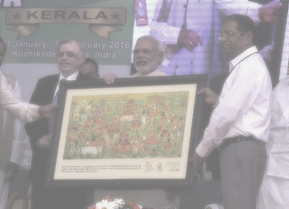
In February 2016, Global Ayurveda Festival was held in Calicut, Kerala in South India. At this festival, Prime Minister Narendra Modi gave a speech declaring total support for Ayurveda. After this moving speech, I received the beautiful replica of picture from Guernica, a local young artists’ group. (photo)
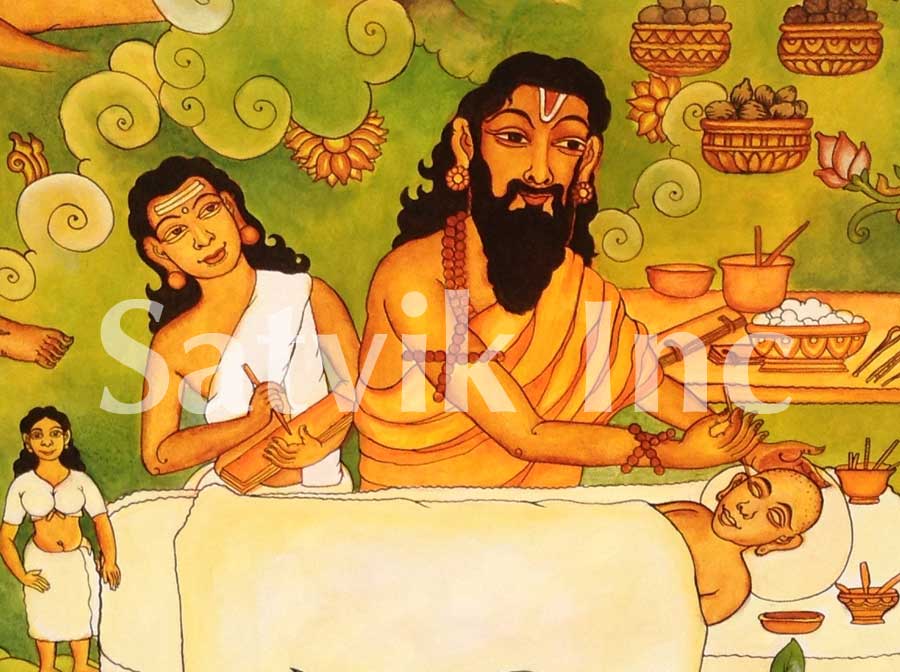
The original picture is a large mural that stretches more than 3m (the photo here shows a part of it) depicting the world of Ayurveda with the colors that remind me of Kerala, filled with natural green.
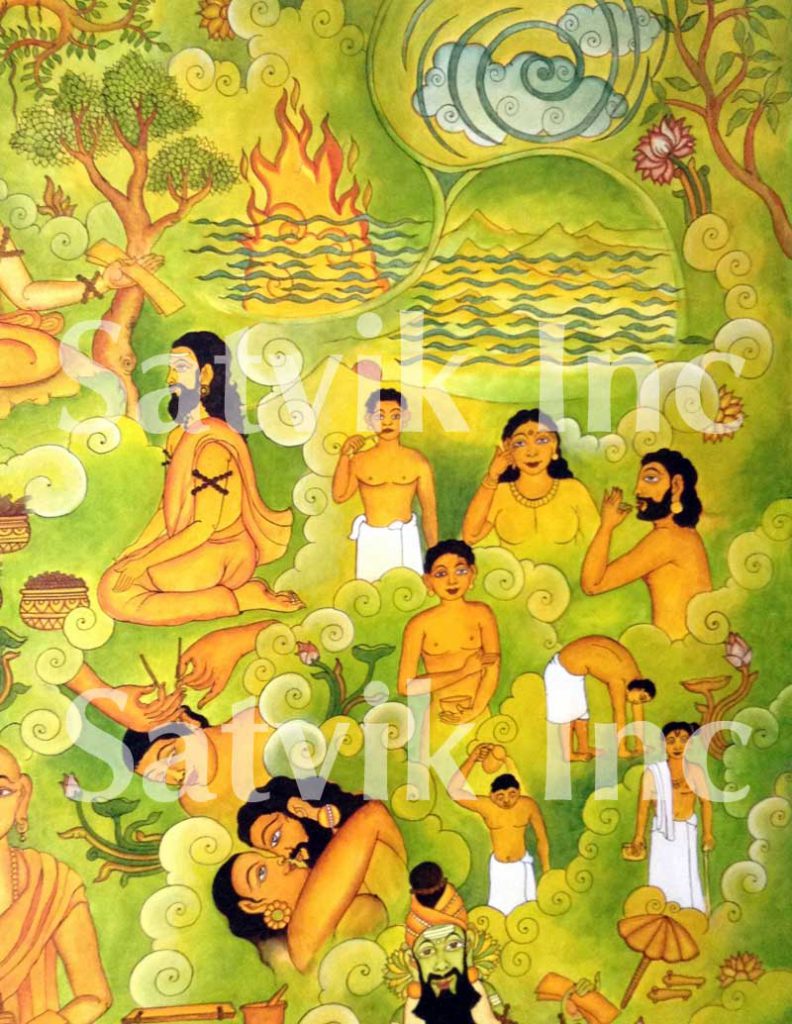
At the first sight, I was intrigued by this picture. With warm and humorous brush work filled with love and care, it portraits all of Ayurveda, including its mythical origin (photo: below left), expansion of the eight branches, theory and treatments of the three doshas and the five elements, as well as herbs such as Triphara.
In Vol. 1, we organized the exhibit so you can get the overview of Ayurveda, providing simple and careful explanation of each keywords that are painted in the picture.
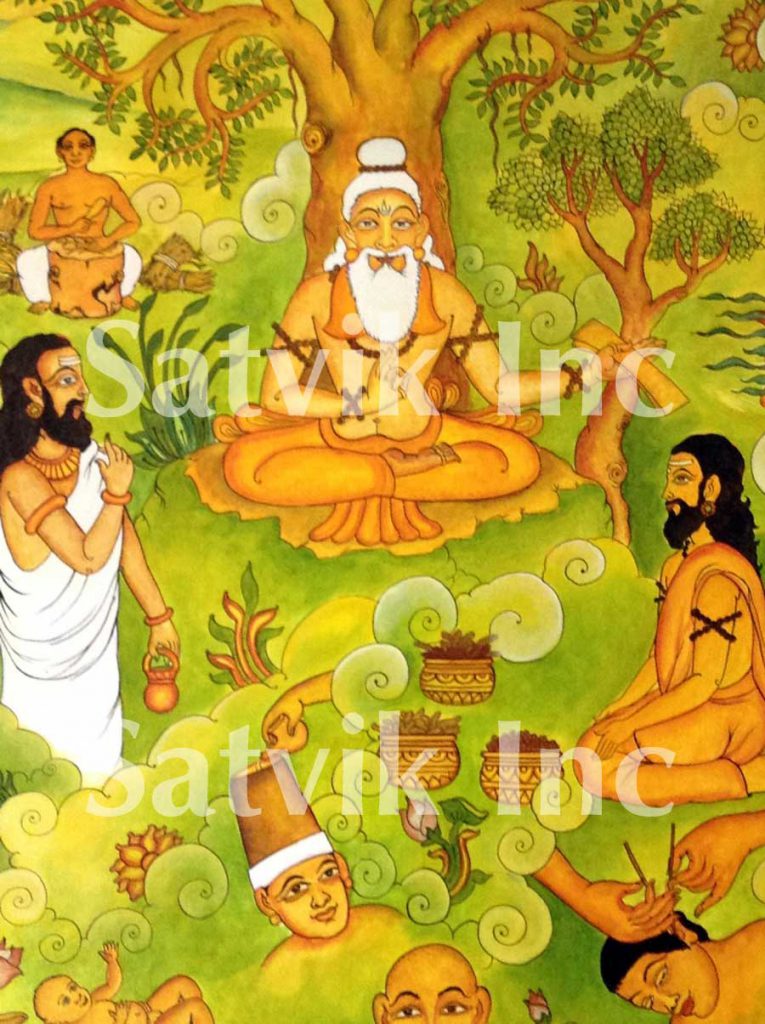
We also prepared exhibits that introduce the traces of Ayurveda in Japanese history and Ayurvedic herbs incorporated in Japanese culture through the influence of Buddhism, so Japanese people can discover Ayurveda closer to their daily lives.
We offer a guided tour every hour, events where you can grub some herbs and try some tools from India. You will understand Ayurveda visually and tactically while having fun.
Report from the Ayurveda Museum Vol. 1 (The first exhibit)
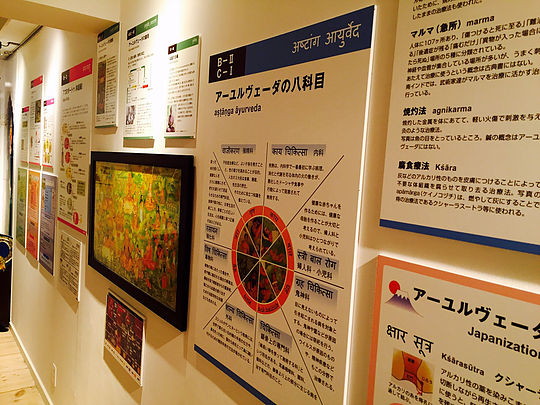
On May 1st, in front of the statue of hindu god, Dhanvantari and Churning of the Ocean of Milk 3D exhibit, Pdt.Munindrapantha officiated Dhanvantari Puja (ritual). Each ritual was explained in English and Japanese for the participants, providing unique style of a service, filling the hall with waves of Sanskrit prayers.
Panels offered easy-to-understand explanations of physiology such as dosha and dhatu, as well as pharmacology which shows the effects of taste, using many graphs and charts, soliciting many requests to make them available as text books.
Tools in the exhibit used for surgery include Agnikarma tools and real thread for Kshara Sutra.
The history of Kshara Sutra in Japan was explained and we provided the list of clinics where you can actually receive the treatment.
Palm Leaf Manuscripts (Sanskrit manuscript written on palm leaves)

Palm Leaf Manuscripts (Sanskrit manuscript written on palm leaves) is the original, written several hundreds years ago. It was kept in Udupi, a city in the state of Karnataka, and we were lucky to be able borrow it thanks to Dr. U.K. Krishna, President of Japan Ayurveda School. It is so rare that some of the Indian teachers who was visiting said this was the first time they have seen the real one. It is a very important manuscript in India as well.
taalapattra Tattva samshodhana samsat・vidya mannya teertha,Udupi, Karnataka India Cooperated by Dr.Krishna U,K. (Principal of Japan Ayurveda school)
Art Works by Hiroyoshi Takeda of Art Unit Masalawala: “Ayurveda Avatara”
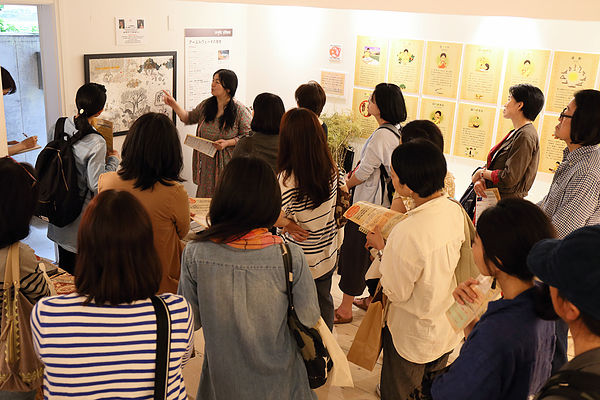
We exhibited works by a Japanese artist. “Ayurveda Avatara” by Hiroyoshi Takeda of Art Unit Masawala, who made an appearance in Tamil movie, illustrates the story of how Ayurveda was delivered from heaven to the human world, based on the first chapter of Charaka Samhita.
The story that Ayurveda was delivered to the earth by compassion and love for all living things impressed many visitors.
Approximately 800 visitors gathered during the exhibit period, and many people were intrigued with such stories that they learned from the guided tour held every hour.
Exhibit of Medicinal Herbs
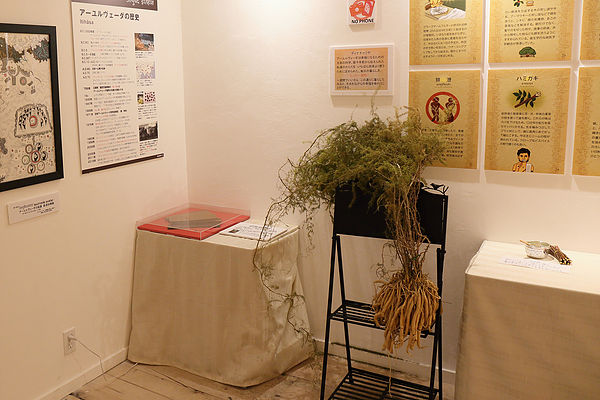
We received great supports from many people for the medicinal herbs exhibit. Among them is “Modama Kobo” of Ishigakijima, who sent us live shatavari and musta plants.
Dr. U.K. Krishna of Japan Ayurveda School had lended us the samples of medicinal minerals of different weights, and Dr. Sardeshmukh Sukmar of Atharva Ayurveda Pharmaceutical had sent us some rare mineral samples.
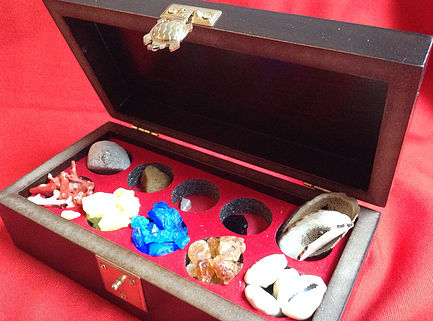
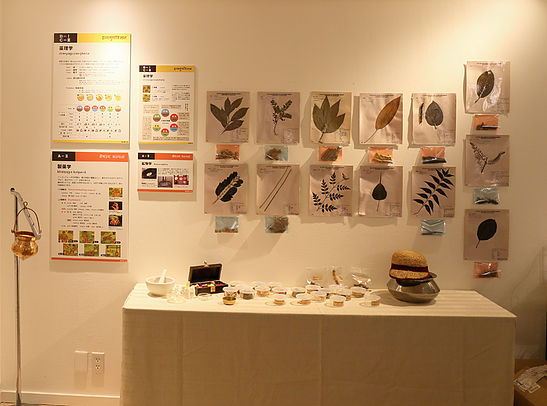
Dr. Anupama Darasive Awake donated samples of seeds and tools for making medicine, while Dr. Shreekanth Undar fo S. D. M. Ayurveda College donated pressed leaf samples. We are very grateful to all of you.
Lectures by Ayurveda Doctors from India
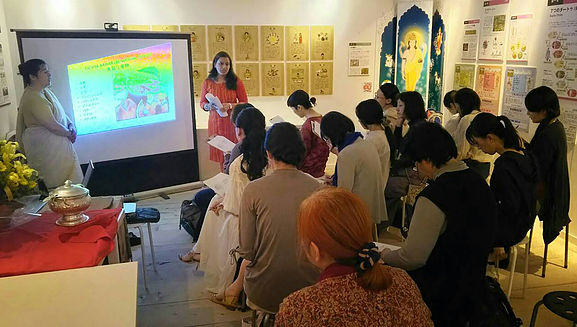
We held lectures and workshops by B.A.M.S. (Ayurvedic doctors) from India. Above photo shows Dr. Manisha Sigla, who is the third in India and a prodigy, at a workshop entitled “Ultimate Care for Constipation and Hemorrhoid.”
Workshop by Dr. Miwako Ohashi, a Japanese Ayurveda doctor
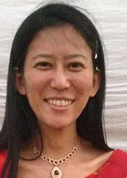
Born in Okayama-shi. Graduated from Kobe Gakuin University Department of Pharmaceutical Sciences. Pharmacist. After graduating from Dr. Vasant Lad’s Ayurvedic Institute in Albuquerque, U.S.A., Dr. Ohashi graduated from Ayurveda school in Wagholi, Pune City in India in 2015 with B.A.M.S., obtaining the qualification as the Ayurvedic doctor. Currently, Dr. Ohashi serves as an intern.
In India, there is a health tradition that has been passed on for thousands of years called “dinacarya”, everyday health method to maintain youth and beauty. Waking up, brushing teeth, washing face, going to the bathroom… everybody does, but there are better and more effective ways to to do them.

Taking small steps everyday makes big difference in the future when you grow old. Don’t miss out the opportunity to know the secrets!
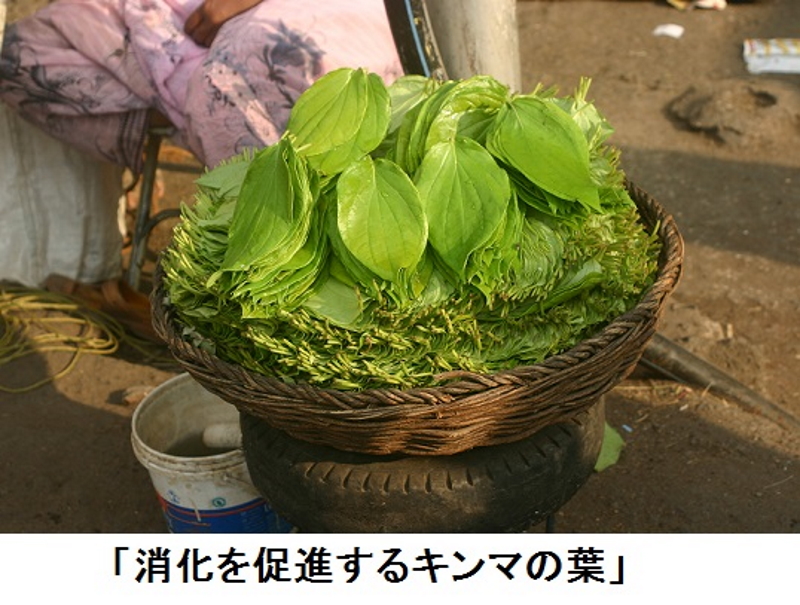
Youthful and charming Dr. Miwako Ohashi taught us the secret of keeping young, as well as the practical methods to take care of our body everyday.
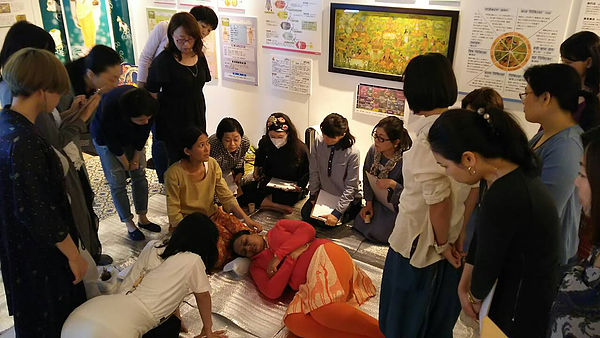
Dr. Ohashi’s workshop theme is “Kati Basti and Its Application” and “Useful Dinacarya”.
“Kati Basti and Its Application” by Dr. Miwako Ohashi
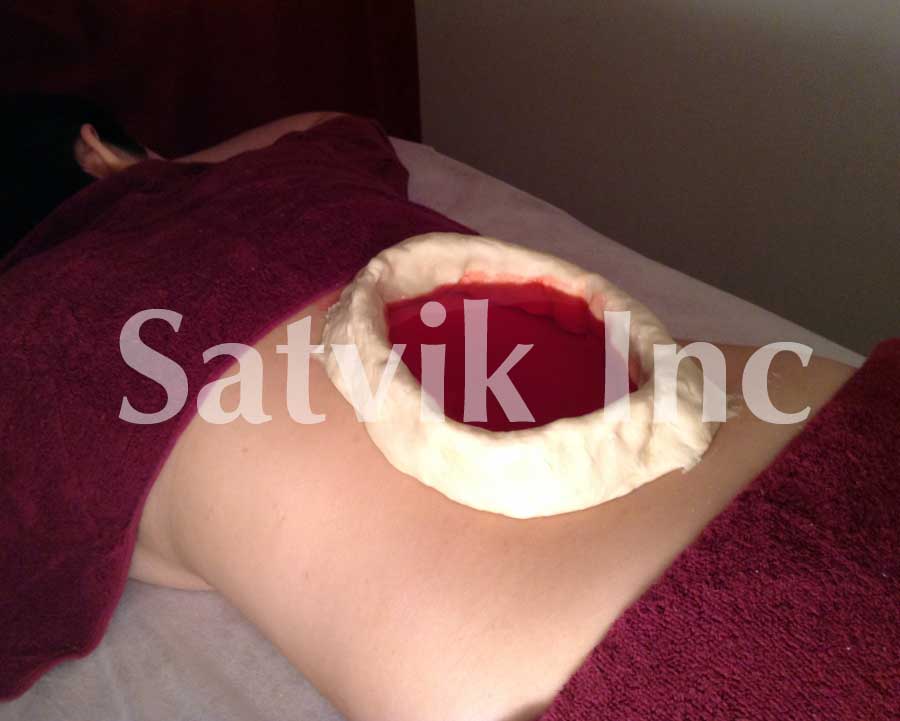
Kati Basti is known for treating lower backache, using heated oil poured into a ring made of flour to warm the body.
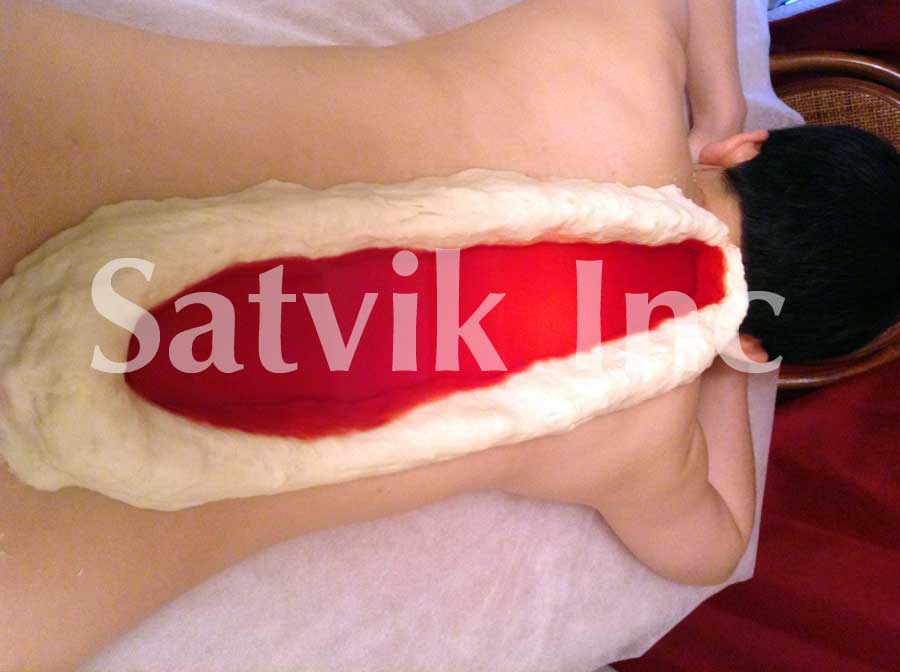
For knee pain, Janu Basti is used and for neck, shoulder and upper back pain, Long Basti along the spine is used. Depends on the location of the pain, the same method can be applied.
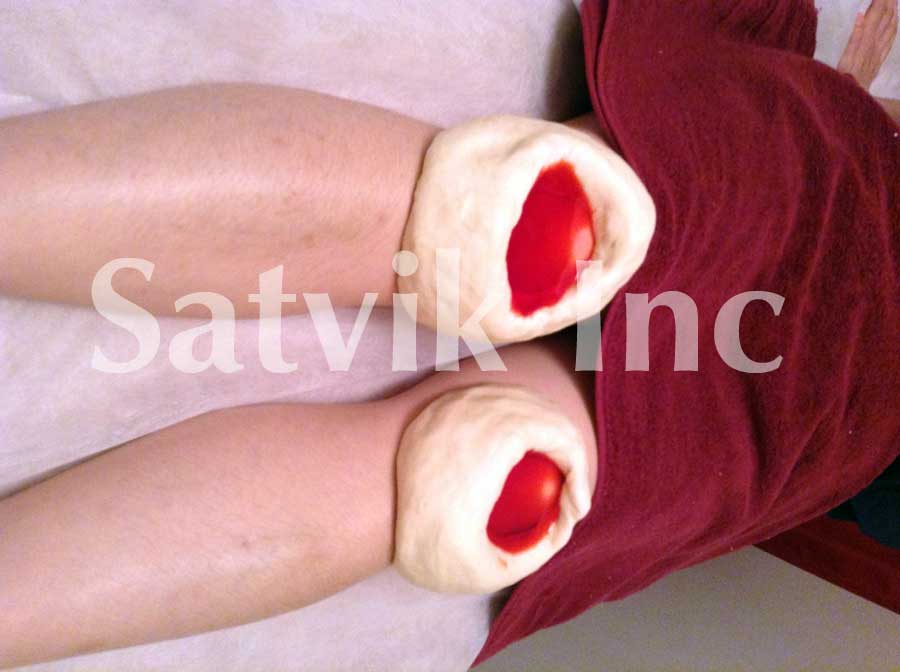
It is a treatment method that can be applied easily at salons and homes.
Each venue offer unique workshops and events. Please be advised that the contents of the exhibit will not be identical to the exhibit in Tokyo.
The venue in Tokyo is LSY Gallery in Omotesando
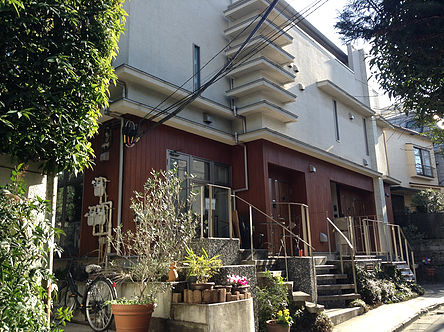
The venue in Tokyo is LYS Gallery, located in the basement of Omotesando Seven Rise Apartments. It is open only for the exhibit, and you will not find anything at other times. Satvik Ayurveda School and Salon is in the Room 101 of Omotesando Seven Rise Apartments.
